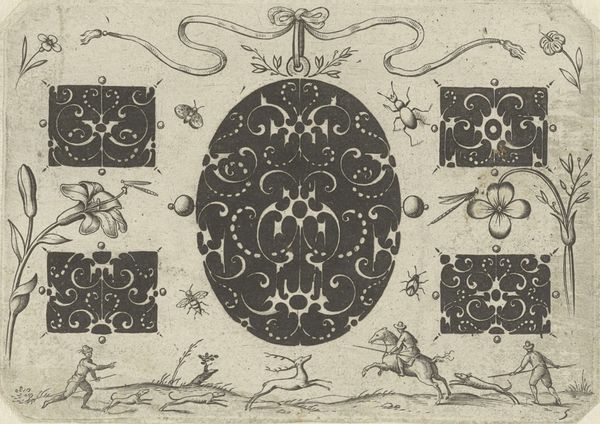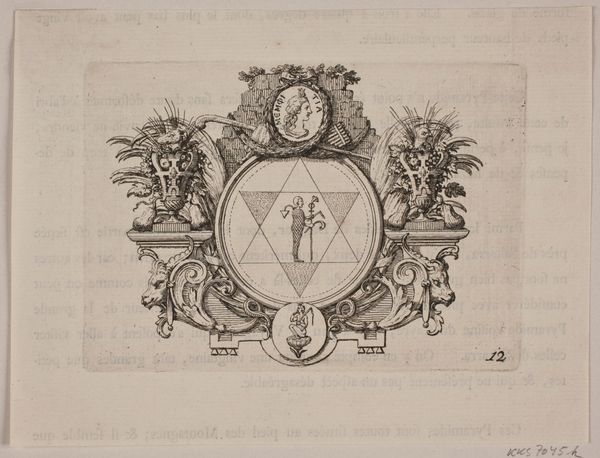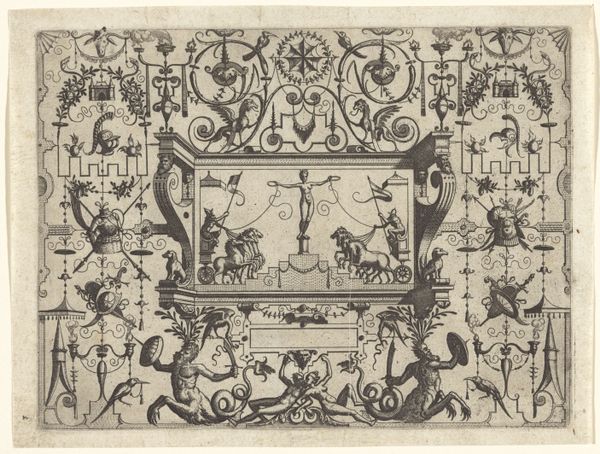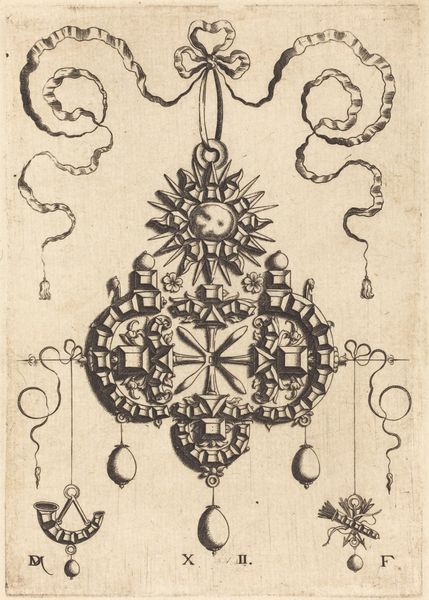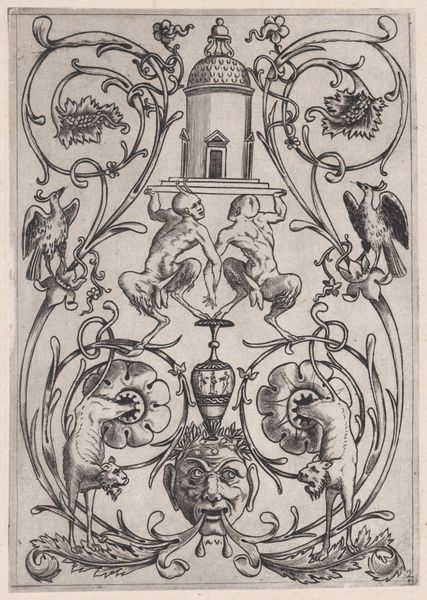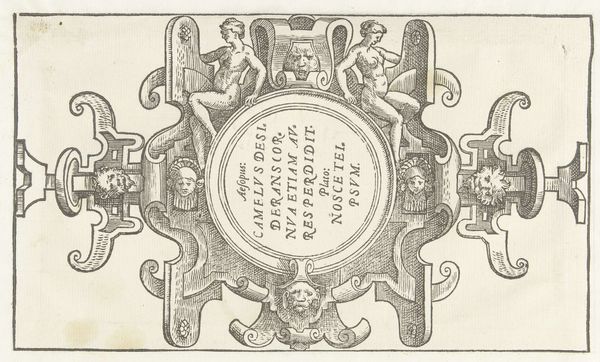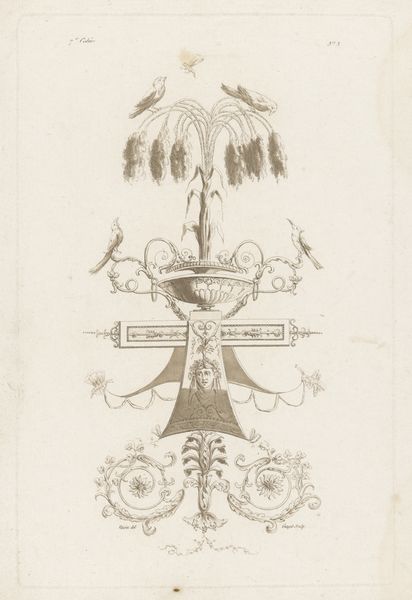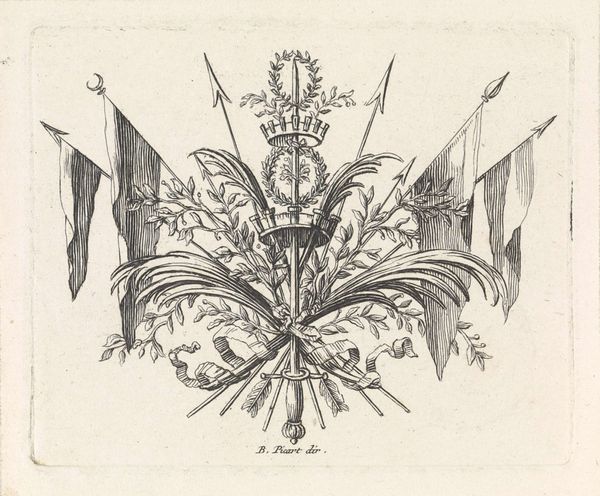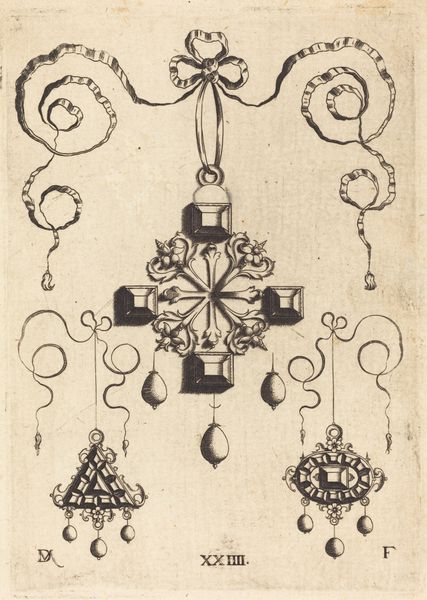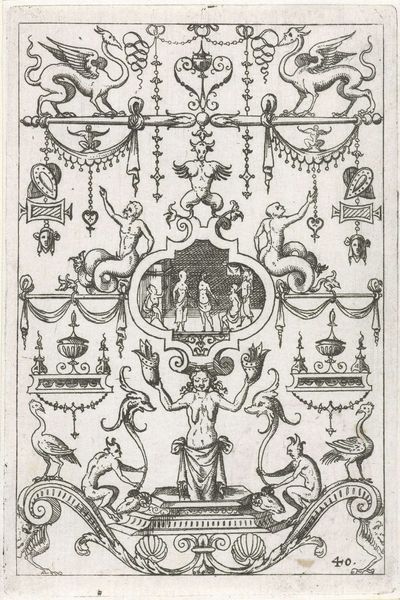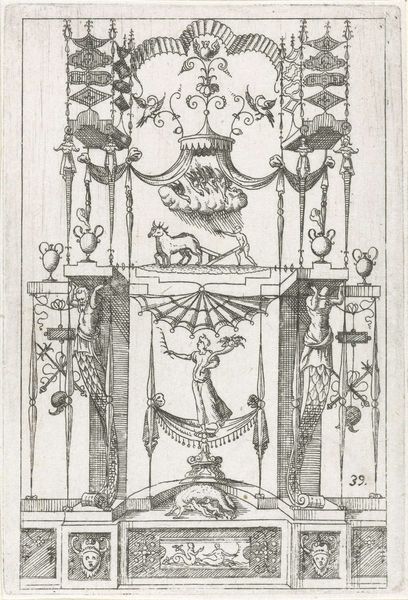
Two panels of grotesque decoration, with winged human figures, birds, and griffins, from a series of panels of different dimensions representing grotesques 1541
0:00
0:00
drawing, print, engraving
#
drawing
# print
#
pen sketch
#
bird
#
figuration
#
11_renaissance
#
line
#
italian-renaissance
#
engraving
Dimensions: image: 3 15/16 x 5 11/16 in. (10 x 14.5 cm)
Copyright: Public Domain
Curator: This engraving, made in 1541 by Enea Vico, is titled "Two panels of grotesque decoration, with winged human figures, birds, and griffins, from a series of panels of different dimensions representing grotesques". It's currently housed at the Metropolitan Museum of Art. Editor: My initial reaction is a sense of elaborate, controlled fantasy. The intricate linework and symmetrical design create a miniature world that's both whimsical and meticulously organized. Curator: Grotesque art, which this exemplifies, emerged during the Renaissance as artists rediscovered ancient Roman decorative styles. These fanciful designs were often incorporated into the architecture and ornamentation of elite spaces, acting as signifiers of power and classical learning. This type of decorative scheme functioned to display ones erudition as well as financial capabilities. Editor: Yes, and looking closely, I notice the way Vico balances positive and negative space. The density of the engraved lines contrasts sharply with the untouched paper, creating a visual rhythm that's quite engaging. The careful articulation of each line also serves to enhance the fantastical details of hybrid forms and figures. Curator: Precisely. And while these grotesques appear whimsical, they're deeply embedded in Renaissance ideas about transformation and the natural world. The fusion of human, animal, and plant forms suggests the mutability of being, reflecting contemporary anxieties and fascinations with hybridity, transformation, and identity fluidity in the Renaissance, when global exchange was introducing never-before-seen permutations. The imagery has links with metamorphosis, as related to a pre-Christian Greco-Roman artistic genealogy, as well as the literal global transformation occurring as a result of international encounters during this period. Editor: I agree, and the choice of engraving as a medium is critical here. The sharp, precise lines of the engraving perfectly suit the highly detailed and structured nature of the grotesque style. A fuzzier medium wouldn’t achieve this effect of almost scientific, taxonomical categorization. Curator: Indeed. The engraving process, involving meticulous cutting into a metal plate, mirrors the meticulous cataloging of knowledge that was characteristic of the era, also emphasizing that elite, knowledgeable Renaissance collectors prized intellectual pursuits, as well as aesthetic appreciation. These prints were accessible—yet simultaneously were about restricted information and power. Editor: What strikes me most is the intricacy. This requires immense skill and control—almost at odds with the chaotic jumble of figures that make up its whole! Curator: Absolutely. Analyzing such visual expressions allows for an appreciation of not only Renaissance art but, broadly, the tensions that exist in culture as it develops new ways of representing itself. Editor: And I find the formal tensions alone provide an inexhaustible field of analysis. The beauty and detail feel somehow magnified by the very small size of the image.
Comments
No comments
Be the first to comment and join the conversation on the ultimate creative platform.
